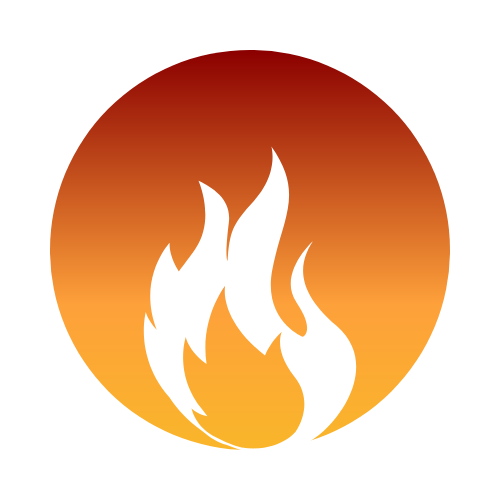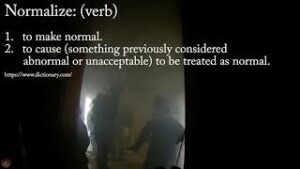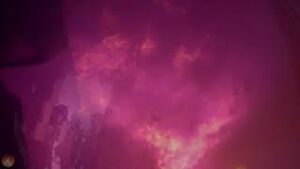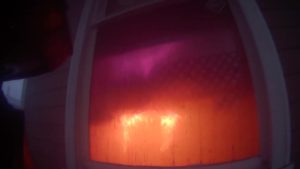There have been a lot of folks asking how they can attend one of our training events. Like every other hands-on training group, we have been shut down by the pandemic. But even when we get back to where we can hold events again it would be impossible for us to meet the demand and the need for live fire training. The truth is that our type of live fire training just can’t be done well with large numbers of students. Even if we were to do a burn every day for five years, we could not reach even a fraction of the students out there. The true solution is to get departments and training consortiums to be able to put on their own high quality live fire training. This can feel like a daunting task, but it can be done. West Coast Fire Training has helped departments and training groups start and improve their live fire training. However, these departments were ready and willing to take the needed steps. For those of you whose departments are not there yet I wanted to lay out some of the steps that you or any other member can take to start moving the ball towards this goal.
1. Educate yourself.
To start convincing others of the value of realistic live fire training you need to be informed on all aspects of the subject. Start by reading LODD and close call reports related to live fire. These are all free online. Get a copy of NFPA 1403 and learn it. It is likely your department or training group has free access to printed copies and/or PDF files of the standard. Reading these documents will give you important information and ensure you understand the history and current rules governing live fire. This will be invaluable when people ask you questions or try to stop your efforts. I have been able to counter multiple naysayer’s and comfort multiple safety chiefs simply because I knew the standard. This will also show that you are serious and not just a flash in the pan.
2. Get as much live fire training as you can and talk to the instructors.
No matter how unrealistic the fire or minimal your role it is still worth going to every live fire event you can. This will give you a chance to see what is going on out there both good and bad. When you go, take notes, and talk to the instructors. Most instructors love to talk about how and why they do their burns. They can often give you insight into local rules and past events that have shaped why things are the way they are in your area. This will further arm you for those conversations when people question you.
3. Be polite to everyone.
It can be frustrating to observe poor quality training and have people tell you no when you push for programs or training that you know are valuable and needed. This can easily lead to harsh conversations and angry words. Do not let yourself or others involved in your efforts do this! Being friendly and understanding with people around you and especially those in positions of power is key to gaining the influence necessary for them to greenlight changes you want made. I have seen several people with great ideas get shot down almost immediately because they had offended someone in the past or were way to aggressive in their delivery. Check out the classic, but still relevant, How to Win Friends and Influence People by Dale Carnegie. The Jocko Podcast is another excellent resource for this.
4. Work on your writing and speaking skills.
The ability to clearly and calmly express your ideas does not come naturally to most of us. It is a skill that must be honed just like any other and it is invaluable when trying to win people to your cause. When your chief asks for a presentation or a three-page document describing what you want to do and why you need to be able to present your position and answer any questions clearly and precisely. You do not need college courses to improve, though they can be useful. Spend time listening to the best speakers in the fire service, read well-written articles. Any time you have a chance, get others to look over your written work, or listen to your arguments before you deliver them. This will force you to polish and clarify your ideas so they will be ready when the opportunity comes.
5. Build a solid reputation and get involved in training in general.If you have a reputation as a solid firefighter and hard worker and are already involved and respected in the training world people will take you more seriously.
6. Plant seeds and be patient.
With all the things listed above and decent support from the training division it still took me three years to be able to expand live fire training in my department. Things just take time, especially in large organizations. I was successful because I was patient and I planted seeds. When the new Captain of Ops training was selected, I invited him to one of the WCFT burns for another department. When he was able to see what I was doing it planted a seed in his mind of what was possible. I invited other influential members of the department to our burns as well. They never had time to attend but it made them feel valued and gave them a better understanding of who I was and what I was doing. This way when my name came attached to a proposal to expand live fire the seed was already planted.
7. Be humble and get help.
Firefighters are problem solvers and we often think we can invent something on our own. While it is possible, like learning any new skill it is a lot easier, faster, and safer if you have an expert walk you through it. It can be hard, especially for departments that do some live fire, to ask for the help they need to get to the next level. It takes humility to recognize that you need help. While not common, there are experts in realistic live fire training out there. In my experience, they are both busy and eager to talk about the subject. Groups like WCFT and FDTN even offer train the trainer programs for departments that want to learn to be better at live fire. An up-front investment in training dollars can lead to a department or training group being able to advance quickly to the next level of training.
8. Be cautious but don’t be afraid to push your program to the next level.
A lot of the lessons that allowed WCFT to become a reality were made possible because my department allowed me and a few others to slowly push our department’s program to the next level. This was only possible because I and the others involved had done steps 1 – 7 and built slowly and cautiously. A single negative event can torpedo years of work so be careful but don’t be afraid to push to the next level.
The goal of WCFT is to bring high quality realistic live fire training to as many firefighters and departments as possible. I hope the information above helps you move the needle of your department in the right direction. If you need advice about how to take the next step don’t hesitate to reach out to me at www.westcoastfiretraining.com or on our Facebook page. Ian Bennett President WCFT.



